Technology Sourcing: A Practical Guide for Business Leaders
Demystifying technology sourcing: Understand the strategic process of finding, evaluating, and acquiring the right IT solutions to drive your business forward.
a five-minute read

In the modern business landscape, the pace of technological change can feel overwhelming. Every week, there's a new "must-have" software, a game-changing cloud solution, or a cybersecurity platform promising to future-proof your business. Has anyone ever heard of that thing called Artificial Intelligence? For many business leaders and lean IT teams, navigating this complex market often feels less like a strategic initiative and more like a never-ending series of shoot-from-the-hip transactions, or at best, tactical purchases. What if every technology choice was a strategic move designed to propel your business forward? This is the core of technology sourcing.
Technology sourcing is the strategic and proactive process of identifying, evaluating, and acquiring the right IT solutions (from the right suppliers) to achieve specific business objectives. It goes far beyond simply finding a vendor and placing an order or quickly gather competitive quotes because an incumbent supplier's contract is coming up in three months. Instead, it’s a disciplined approach that ensures every technology investment—from AI and cloud services to communication platforms and cybersecurity—is a deliberate and informed decision.There's a key difference
Sourcing vs. Procurement: the difference is everything. While the terms are often used interchangeably, there is a key distinction, and understanding it can save your business from costly missteps. Let's briefly contextualize it with other related terms:
Buying is the simplest act—a transactional exchange for immediate needs. Think of it like grabbing a coffee.
Purchasing is formalized buying within an organization, following procedures to acquire goods or services. It's buying, but with a purchase order.
Procuring is a more comprehensive and structured process than purchasing. It involves managing the entire acquisition cycle for operational needs, including requisition, order placement, receiving, and payment. It's about getting the stuff you need to keep the lights on.
Sourcing is the most strategic and upstream of these processes. It’s not just about getting what you need now, but thoughtfully determining what you need for the future, why it's essential, and who can provide the best strategic partnership and solution to achieve your long-term goals.
Think of it like building a house:
IT Procurement is the logistical act of acquiring all the necessary components—buying the wood, nails, and drywall according to a plan. It's the transactional, execution-focused part of acquiring a good or service for operational use.
Technology Sourcing is the strategic blueprint and the selection of the master craftspeople. It’s the meticulous process of deciding what to build, why you’re building it, and who can provide the best, most cost-effective materials and labor to get the job done right, ensuring the finished house aligns with your vision for years to come.
Sourcing is the upstream, strategic work that makes buying, purchasing, and procurement more purposeful and efficient. A valuable process rather than a routine chore. While sourcing focuses on finding and establishing long-term relationships with the right suppliers, procurement handles the day-to-day execution of a purchase, including purchase orders, contract management, and payments.
An important note on Sourcing's True Scope: It's easy to reduce "sourcing" to the knee-jerk reaction of simply getting three competitive quotes or embarking on a formal, long-winded and arduous Request for Proposal (RFP) process. But true strategic sourcing is far more dynamic, and if done well can even eliminate the need for the dreaded RFP - call it an RFP-alternative. It's about genuine market exploration, understanding evolving needs, and finding the best fit for long-term value, not just checking a box or getting stuck in bureaucratic quicksand. It's about smart decisions, not just diligent paperwork.Core Components
To get it right, technology sourcing follows a structured process:
Needs Assessment: Before looking at solutions, you must first understand the problem. This initial step involves a thorough analysis of your current technology and processes to identify what your business truly needs to be more efficient, secure, or competitive. For some this can often be the hardest part of the process. It requires introspection - slow down so you can speedup; one step back to take two steps forward.
Market Research & Vendor Identification: The IT marketplace is a crowded space, with thousands of providers all vying for your attention. Strategic sourcing involves in-depth market analysis to locate potential suppliers. It’s about being vendor-agnostic and understanding the full range of available options, rather than just the ones you know. Unfortunately this is far more involved that a quick search or asking your favorite LLM.
Evaluation & Selection: Once potential solutions are identified, they must be rigorously evaluated. This includes assessing them for functionality, scalability, security, and total cost of ownership (TCO). The goal is to choose a solution that aligns perfectly with your business goals and budget. \
Negotiation & Contracting: A key part of the sourcing process is negotiating with vendors to secure the best possible pricing and contract terms. This goes beyond the sticker price to include understanding the scope of implementation, service level agreements (SLAs), support terms, and future scalability.
Why Strategic Sourcing Is Crucial Today
An intentional sourcing strategy delivers clear, tangible benefits:
Cost Savings & ROI: While a good price is important, strategic sourcing focuses on long-term value and total cost of ownership, not just initial cost. A well-sourced solution considers other aspects and angles and includes current solutions, which can lead to significant cost reductions over time.
Risk Mitigation: Proper sourcing helps vet suppliers for quality, reliability, and security, which helps minimize risk related to security breaches, compliance, and supply chain disruptions.
Strategic Alignment: Technology sourcing ensures every new project, imitative, or piece of technology supports the business's (and IT department’s) overarching strategy. It prevents siloed tech decisions that don’t work together and ultimately hinder growth. This forces you to “zoom-out” throughout the process to ensure things align with the overall vision.
Access to Innovation: By keeping tabs on the market and innovations, a strategic sourcing approach enables a business to stay competitive and leverage new technologies that give them an edge - the big one these days being artificial intelligence. This helps to keep new tech “in the back of your head” making it easier to act quickly and pivot. And when things come up you at least have a better perspective on how to approach challenges and new initiatives.
The Role of a Technology Adviser
For many businesses, the idea of conducting this kind of extensive and important research is daunting. They may lack the time, internal expertise, or resources to navigate the complex and everchanging IT landscape effectively, whether its regarding a specific project or an overall strategy. If this describes your situation, seek out help - a friend, a colleague, a consultant. This is also where a technology agent/adviser can be an indispensable partner.
A technology adviser acts as a strategic guide, bringing deep market knowledge and a vendor-neutral perspective to the table. The right adviser/agent constantly has their finger on the pulse of technology and should already have a proven process in place. They handle the heavy lifting of the sourcing process providing businesses with objective and unbiased recommendations. The right partnership with the right adviser ensures that you not only get the best-for-you technology, but also the best possible terms, all while saving you valuable time and resources.
Pro-Tip: Work Smarter, Not Harder! For the busiest of teams, apply these strategic sourcing principles first and once to finding the ideal technology adviser. Once you've successfully sourced the right expert partner, let them handle the ongoing sourcing for all your technology suppliers. It's a strategic investment that pays dividends in efficiency, expertise, and peace of mind.
Final Thoughts
Ultimately, technology sourcing is a discipline that empowers business leaders to take control of their IT destiny — better aligning IT with business goals and outcomes. It transforms technology from a costly necessity into a strategic asset. By moving beyond reactive purchases and embracing a proactive sourcing approach, businesses can drive innovation, reduce risk, and ensure every investment is a smart step toward a more successful future.

